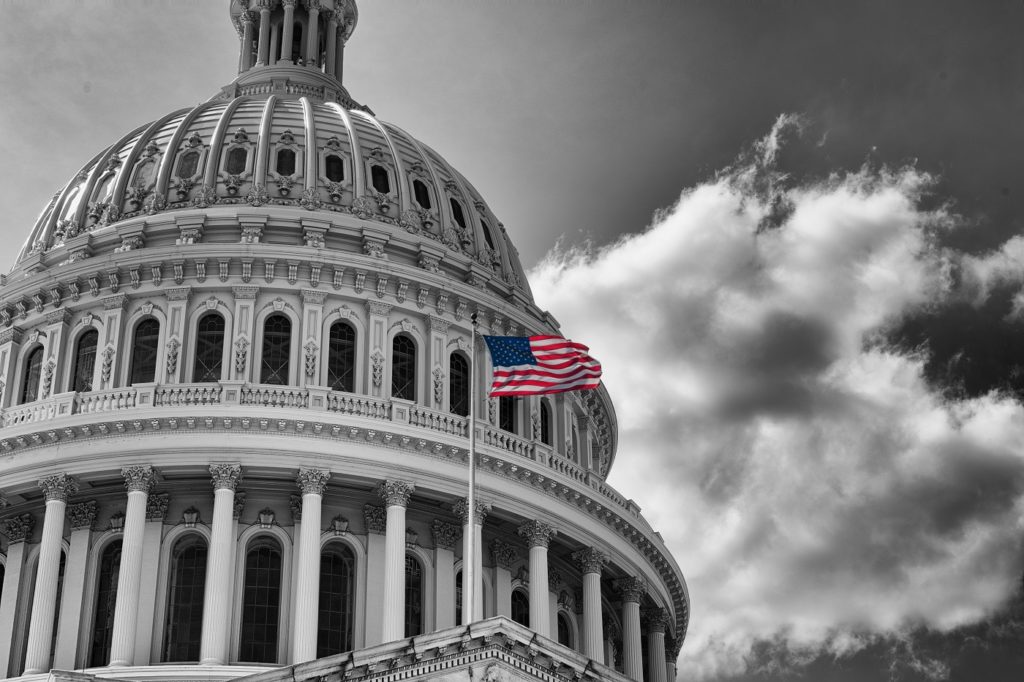In A Time to Build, Yuval Levin laments that “Congress is doing next to nothing.” He goes on to claim that a “source of dereliction and dysfunction” is that “many members of Congress have come to understand themselves most fundamentally as players in a larger cultural ecosystem, the point of which is not legislating or governing but rather a kind of performative outrage for a partisan audience.” Instead of the institution forming members into legislators, members are using the institution as a platform from which to perform.
Having served in the House of Representatives from 2005 to 2021, and prior to that having worked as a staffer in the House and studied the institution as a political scientist, I know the problem all too well. Congress’s dysfunction was and continues to be troubling.
Levin concludes that in order to improve and strengthen the system, “we badly need a party of the Congress within both chambers.” This does not mean a separate political party whose purpose is to compete against the Democratic and Republican parties, but rather a group of members who are committed to exercising the constitutional powers of the institution.
In today’s hyper-partisan political environment—so extreme and moralized that it can rightly be referred to as sectarian in nature—this creates a serious tension for members who desire to be institutionalists. If they choose the institution over their party, these members not only pass up opportunities for easy political gain through playing to the partisan crowd, they risk punishment for their heresy. To rebuild Congress, its members must choose bipartisan cooperation and compromise over partisan grandstanding designed to win favor with party activists, donors, and voters.
Start your day with Public Discourse
Sign up and get our daily essays sent straight to your inbox.To rebuild Congress, its members must choose bipartisan cooperation and compromise over partisan grandstanding designed to win favor with party activists, donors, and voters.
A House Divided
In the House, where party leaders have substantial power to reward and punish members and where the Speaker has significant control over the legislative process, bipartisan cooperation is even more likely to be punished and less likely to be successful. This explains why almost every bipartisan compromise that ends a government shutdown or addresses other emergencies originates in the Senate. Because the House is the weaker of the institutional links, the only way the institution of Congress will have a chance to be strengthened is if a “party of the Congress” forms in that chamber. This will require opening up House rules to give rank-and-file members greater opportunities for success as entrepreneurial bipartisan legislators.
While the Senate is not a paradigm of legislative productivity, the problem is much worse in the House. That is because over the past four decades House members have gradually given up more and more of their power to their party leaders. As the two parties have become more ideologically homogeneous internally and more widely separated on policy positions, members within each congressional party have increasingly believed that they are a team working together to achieve a common policy agenda against a united opposition.
Outside Congress, voters have come to see congressional candidates more as team members than as individuals, making the electoral fates of candidates more dependent on their party’s popularity. Therefore, individual members have seen their policy and electoral successes tied more and more closely to the success of the party team, leading to a progressively greater willingness to change the rules in ways that give up power to party leaders in the hope of increasing the likelihood of collective partisan victories.
Because members are elected as partisans and vote as partisans, parties in the House now look like pseudo-parliamentary parties. This makes it easier for the majority party to get legislation passed in the House, but it is often ideologically extreme. This does not work well under our Constitution, which contains checks and balances designed to spur compromise, and an electoral system that can—and, in the past four decades, usually does—result in divided partisan control of government. Instead, these pseudo-parliamentary parties produce legislative gridlock and partisan oversight of the executive, leaving a power vacuum that has been filled by an imperial presidency as well as activist courts and an unelected administrative state. In addition, since members have weakened their own power to act independently in the legislative process, they have a reduced incentive to put in the work to try to legislate and instead prioritize performance for political, policy, and personal gain.
Because members are elected as partisans and vote as partisans, parties in the House now look like pseudo-parliamentary parties. This makes it easier for the majority party to get legislation passed in the House, but it is often ideologically extreme. This does not work well under our Constitution.
The Problem Solvers Caucus
Over the past ten years, I watched many members who desired to be serious legislators get tired of the dysfunction. Many of them left, while some stuck around with reduced legislative aspirations. In recent years, we have seen a rise in the number of new House members who have little interest in being legislators and only seek a platform to perform. But there are still representatives who want to put in the hard legislative work to make Congress function. In 2017, I joined the newly formed House Problem Solvers Caucus, which works to develop bipartisan policy solutions. The caucus now has fifty-eight members and always maintains an even partisan representation in its membership. It operates through a process much like the one Madison intended for Congress: open participation and deliberation in an attempt to reach bipartisan policy agreements that can become law.
In some ways, this caucus is a “party of the Congress” in the House. Two years ago, the Problem Solvers began to work more closely with a like-minded bipartisan group of senators, and their collaboration helped get a COVID relief package passed in December 2020. Despite this success and a few others—including relief for the border crisis in June 2019—the caucus has struggled to have an impact, because House rules give the Speaker a tremendous ability to control who and what can be heard in the legislative process. In 2017, the caucus generated and endorsed substantial bipartisan proposals addressing immigration reform and improvements in the Affordable Care Act, but neither could be brought to the floor.
For a “party of the Congress” to have a chance to build its membership in the House, members must see opportunities for efforts such as this to succeed. The Problem Solvers Caucus has understood that this will require House rules to be changed. That is what the caucus tried to do in 2018.
When Speaker Paul Ryan (R-WI) announced he was not running for reelection in 2018, it was guaranteed that the House would be electing a new Speaker the next year, and it was assumed that either party could be in the majority after the election. Since a Speaker candidate needs the support of a majority of House members to win the position, any group in the majority party that was large enough could leverage their votes for concessions. In July 2018, the caucus announced that it was endorsing a package of House rule changes designed to “Break the Gridlock” by moving some power away from the Speaker and back to committees and individual members. For example, any amendment that had the support of twenty Democrats and twenty Republicans would be assured consideration on the House floor. Any bill that passed out of committee would be debated and voted on by the whole House. Each year, every member could choose at least one bipartisan piece of legislation for a committee markup in one of their committees. Party ratios on all committees, including the Rules Committee, would mirror the ratio of majority to minority party members in the entire House to give the majority party less control.
After Democrats won the majority of House seats in the November election, I was one of nine Democratic Problem Solvers who announced we were withholding our votes from any Speaker candidate who did not support our package of rule changes. This left the Speaker candidate endorsed by the Democratic Caucus, then-Minority Leader Nancy Pelosi (D-CA), short of having the necessary votes. But having already wielded power as party leader for sixteen years and being the presumed Speaker, Pelosi had access to plenty of carrots and sticks that she used to win votes. Speakers can control what bills come to the floor, what amendments can be considered, which party members serve on each committee, which members get to serve on special commissions, and many other perks that can be used to reward or punish members.
Outside groups aligned closely with Pelosi, and the Democratic Party establishment criticized the nine of us for being disloyal to the party, which carried an unspoken electoral primary threat. Inside and outside Congress, progressives attacked the rule changes and those of us supporting them because they empowered the minority party and bipartisan legislating. Although most members would have seen their power increased by the rule changes, no one joined our effort, presumably because they did not want to risk being seen as challenging the power of the probable Speaker.
A Template for Future Reform
The Problem Solvers Caucus eventually was able to win a few rule changes, which devolved some legislative power away from the Speaker for the first time in over forty years. Still, these changes were far from what is needed to make the House functional.
Despite the limited success in changing House rules in 2018, the Problem Solvers’ effort provides a template for future attempts. If Nancy Pelosi keeps her pledge not to seek the speakership again, there will be a new Speaker of the House in 2023. In addition, control of the House could be in the hands of either party. That will create an opportunity for another courageous bipartisan group of members to try to reform House rules and create the possibility for success for a “party of the Congress.”
The effort needs to begin now, and it needs the strong support of Americans across the country who are tired of the dysfunction of Congress and will support representatives who are willing to put the institution—and the country—above partisanship.














